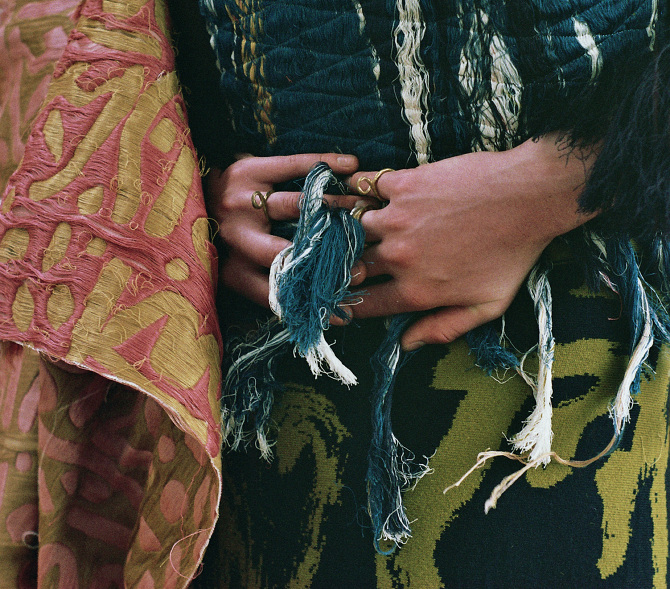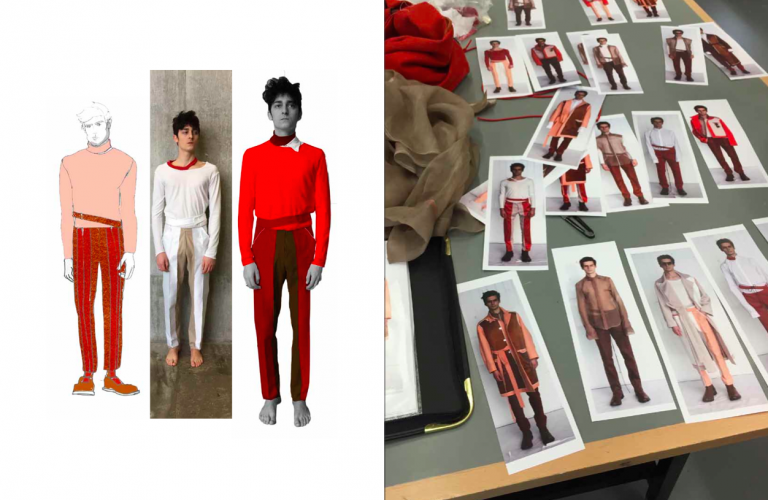“Running your own brand is very different, because a huge amount of time is swallowed up by admin. This seems obvious, but we didn’t realise how much time we actually had to spend in front of the computer.”
Your work doesn’t just tackle the climate crisis by incorporating sustainable fabrics, it is also designed to endure the harsher weather conditions the climate crisis will inevitably increase. How have you adapted your designs for this function?
Designing to endure the effects of climate change isn’t necessarily something we’ve taken into consideration directly, but all the designs explore aspects of functionality. In some cases, this is to do with traditional ideas of function (protection from varying weather conditions or adaptability and transformability), but we’ve also begun exploring ideas of functionality within a psychological or emotional framework. We’re thinking about how specific design choices can evoke a certain response from the wearer. For example, the use of colour, tactility and textures to impact mood or designing for a specific activity (i.e spending more time outdoors in order to reduce stress and anxiety).
You completed your MA in 2017 – how has your view of the industry changed since graduating? What lessons have you learnt since leaving education?
Our view of the industry hasn’t changed a whole lot. We both worked in the industry before doing our MA and continued to work on industry projects and consultancy during our time studying. Running your own brand is very different, because a huge amount of time is swallowed up by admin. This seems obvious, but we didn’t realise how much time we actually had to spend in front of the computer. We have learned a million lessons from the last year, which could only be learned through experience. We refer to the experience as ‘brand school’ – it’s a good way of comforting ourselves when things don’t go to plan.
“We have learned a million lessons from the last year, which could only be learned through experience. We refer to the experience as ‘brand school’ – it’s a good way of comforting ourselves when things don’t go to plan.”
What do you consider the most challenging parts of running your own brand and why?
Budget. To be completely honest the hardest part of starting a brand is being able to realise your ideas for what you want to design. Finding the right factories and suppliers can cost a lot of money. We had to take it very slowly to be able to do what we want and we are still not there yet.























